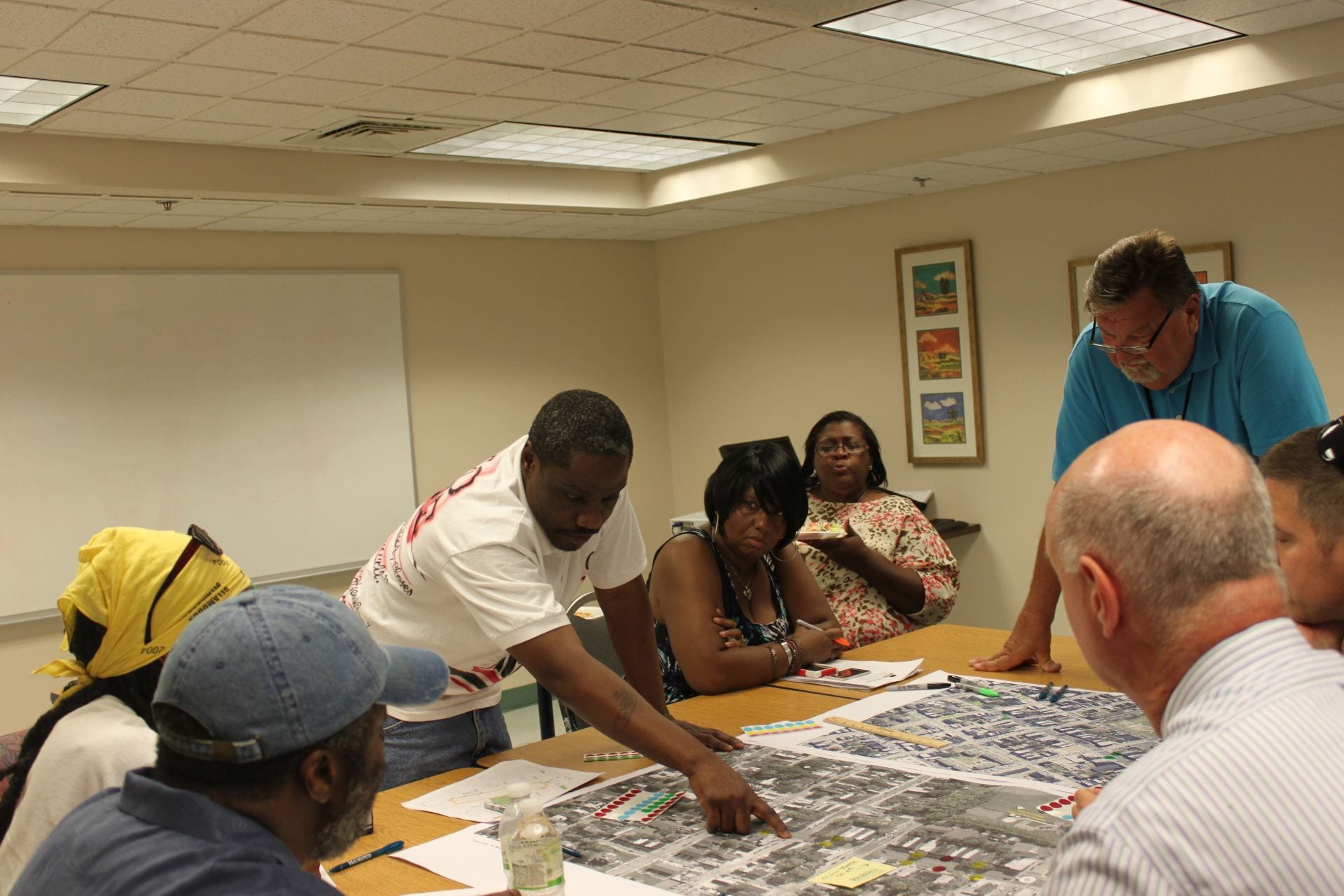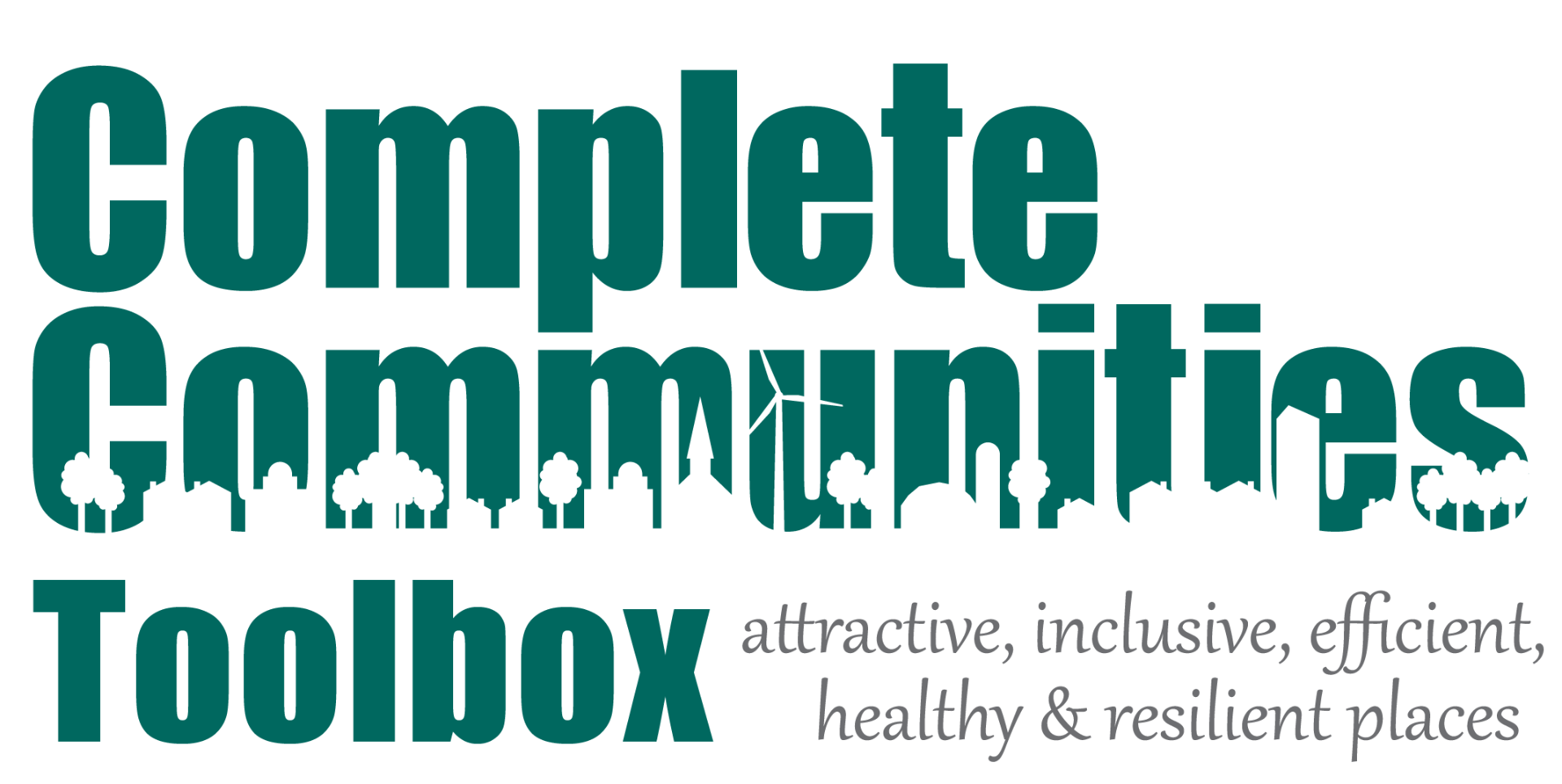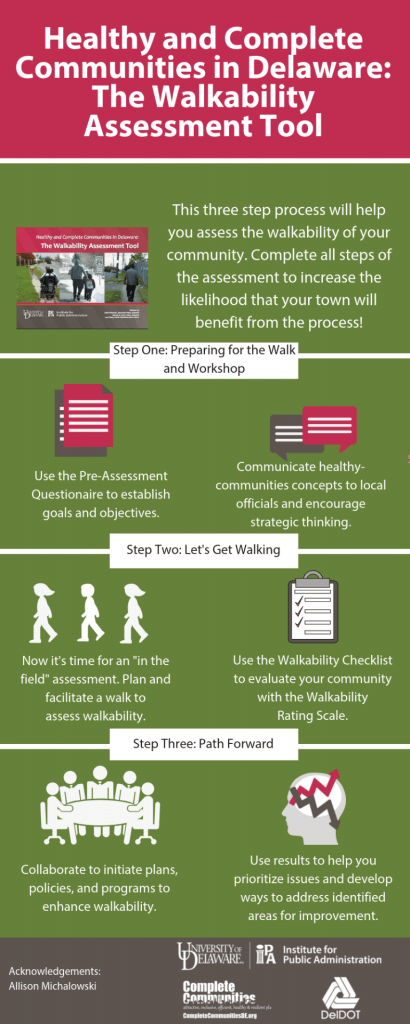What Is the Walkability Assessment Tool?
The benefits of walkability are clear, but without guidance, it can be difficult to identify the best approach to approving walkability in your community. From identifying the areas for improvement to using finding the best ways to create change within the context of your community, The Walkability Assessment Tool provides local communities with step-by-step guidance and easy to use tools to lead you through the process of finding walkability solutions that are right for you!
IPA’s Healthy and Complete Communities in Delaware: The Walkability Assessment Tool provides Delaware municipalities with guidelines for evaluating walkability and considering strategies to improve local pedestrian networks. The tool emphasizes the policy framework that supports walkability, provides hyperlinks to online resources, and prepares participants to engage in an interactive assessment process from pre- to post-walk activities. A walkability assessment does not replace the need for an ADA Self-Assessment and Transition Plan, which is a requirement for state and local governments under Title II of the Americans with Disabilities Act.
Who Should Use This Tool?
The assessment tool and three-step process is designed for use in a facilitated workshop setting to engage stakeholders. It is recommended that the workshop be organized and facilitated by a designated workshop leader/facilitator who is an authorized representative of a Delaware local government (e.g., planner, consultant, municipal staff member) and involve a diverse group of stakeholders. The Walkability Assessment Tool provides a glossary that may be used to familiarize workshop leaders and workshop participants with any unfamiliar terms.
How to Use the Tool?
The Walkability Assessment Tool is a three-step process, and the tool includes materials and instructions for each step of the way. Completing all three steps of the assessment is the best way to complete a thorough evaluation and increase the likelihood that your town will benefit from the process.
Three-Step Walkability Assessment Process
- Walkability Assessment Questionnaire
- The Walkability Assessment Checklist
- Path Forward
 Step One:
Step One:
Preparing for the Workshop and Walk
Step 1 provides an advanced preparation process to ensure the success of the assessment process. This step identifies and engages stakeholders in evaluating the walkability of an area or specific neighborhood within a jurisdiction. It provides a Walkability Assessment Questionnaire to address the “who, what, why, when, how, and where” in planning workshop logistics. A representative of the municipality should complete the questionnaire, with input from stakeholders and prospective workshop participants, prior to scheduling the workshop and in-field walkability audit.
“The Walkability Assessment Tool Visual Prompts: What to Look for on Your Walk” is a series of visual prompts that correspond to an online, narrated presentation. These prompts will help participants prepare for and understand what to look for during the in-field walkability audit and recognize common issues with pedestrian environments that contribute to safety, connectivity, access, and mobility issues.
 Step Two:
Step Two:
Let’s Get Walking
Begin the workshop with a brief orientation and narrated video presentation on The In-Field Walkability Audit: An Overview of What to Look For, which is designed for viewing in a facilitated workshop setting. It has been produced to help participants be aware of what to look for during the in-field walkability and is designed for viewing in a facilitated workshop setting. The Walkability Assessment Checklist enables participants to record their observations while walking and talking during the audit.
 Step Three:
Step Three:
Path Forward
Upon completing the in-field walkability audit, participants immediately reconvene in a facilitated workshop setting for an interactive mapping exercise to build consensus and develop an action plan for improvements. A facilitator will work with stakeholder groups to prioritize recommendations, prepare a written summary, present findings, gain support, and develop an action plan that considers the need for plans, policies, design changes, funding support, maintenance plans/agreements, technical assistance, and outreach/ education.

In an example of step 3, WILMAPCO leads a walkability workshop that engages the public and other stakeholders in the process of planning for walkability.



